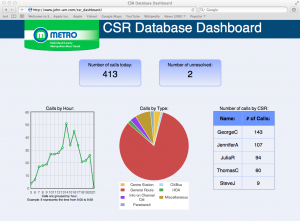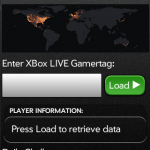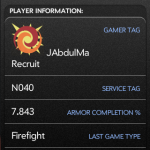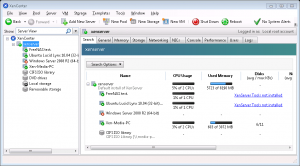This is my first post in a series detailing some of my previous work. It serves to remind me of how I accomplished tasks before, formats and techniques I used, and gives me a means to show my work to others if needed.
When I started at Metrolink I was tasked with finding ways to improve their Computer Aided Dispatch / Automatic Vehicle Location (CAD/AVL) system and implement the data it was using. Part of that process was filling in for dispatchers and learning the routes and stops used by the buses.
The most difficult part of this was sending passenger requested transfers. They had to be sent from the requesting buses to the receiving buses manually, through the dispatcher. For a seasoned dispatcher this wasn’t a problem, but in my case I never had enough time on dispatch to really cement in my mind which buses would be at each transfer location. Eventually I found a way to make a cheat sheet: I would use SQL to query the scheduling database, giving me an always up-to-date schedule from the current time to about an hour after that. I would use JSP and Spring to get that information onto a web page and formatted in a way that makes determining where the transfers are going easier. Then I could access this sheet from any browser to figure out the transfers more quickly, and give it to new dispatches to aid them as well.
Here is what it looks like, or click here for an offline demo: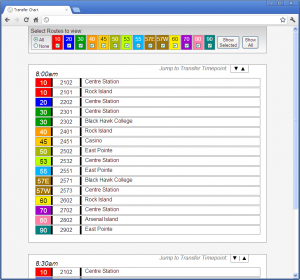
I don’t want to write pages of material about how Metro’s route system works, but suffice it to say that the Route (the colored section) is a path the bus takes, the block number next to it designates different buses on the same route, and the location shown on the right tells you where the bus will be at the time shown on top of the box. Up top you can filter out just the routes you want to see.
A really basic example of how this would be used is this: Assume it’s about 7:50am, and I have the screen shown above. I receive a transfer from block number 2102 requesting the Route 30. Looking over the 8:00am entry, I can see that the 2102 is a route 10 bus that will be at Centre Station at that time. So now I need to look at the route 30s – there is one that will be at Black Hawk College at 8:00, and another that will be at Centre Station. The Centre Station bus is the one I want, so I’ll send the message to the bus with the block number 2302. The whole process takes just a few seconds, which is important because there are a large number of transfers that come in.
When I was designing this I had several objectives in mind, along with making sure the chart functioned correctly. First I wanted to keep content and presentation as separate as possible. It makes for cleaner code – especially since this is written in JSP for actual use – and I love the idea of swapping out the CSS and some images for a complete appearance overhaul. The only portion of this page where I break that ideal is the table up top – the background colors are set on the page. That said, there isn’t much of a reason to change that table, and doing this via CSS is easy enough by setting an ID for each cell.
I wanted the design to be consistent cross-browser as well. Unfortunately when dealing with IE6 there is only so much one can hope for, but generally speaking this looks the same no matter how you load it. And it doesn’t lose functionality in any browser. That said, since I wrote the code some display inconsistencies have popped up in the newest version of Firefox. Specifically in how the table is handled in the top menu bar.
This project had its share of problems too, I hadn’t worked with visibility and display CSS settings before, so learning how they worked took some time and made for some unusual results. This was exacerbated a bit when I added the ability to jump between “time points” where the buses are at one of the transfer locations. I had to put an anchor link in an invisible div that remained active in the DOM, while not disturbing the rest of the layout, and also jumped to exactly the right position when click. It took some time tweaking to get all of that working, but I love the results. When you jump to an item it lines up with the top nearly perfectly.
Also, if I had to do it over I wouldn’t use Spring for this chart. I had done some internship work at Pearson where I used Spring and JSP to display database information, and having heard about how much easier Spring makes database access I figured it would be foolish not to include it. But this project only needed one query to be sent on load time, and all the excess that Spring brought to the table wasn’t worth it. If I had more queries to run it would be a whole different story, but for something this simple I think Spring was excessive.
Overall, I’ve been very happy with how this project turned out and how useful it’s been. The first day I used it I was nearly able to keep pace with the other dispatchers, and the drivers noticed that I wasn’t taking as long to get them their information. It was even used for dispatchers in training up until about a month or two ago, when the CAD/AVL system automated the sending of transfers. Not bad eh?
